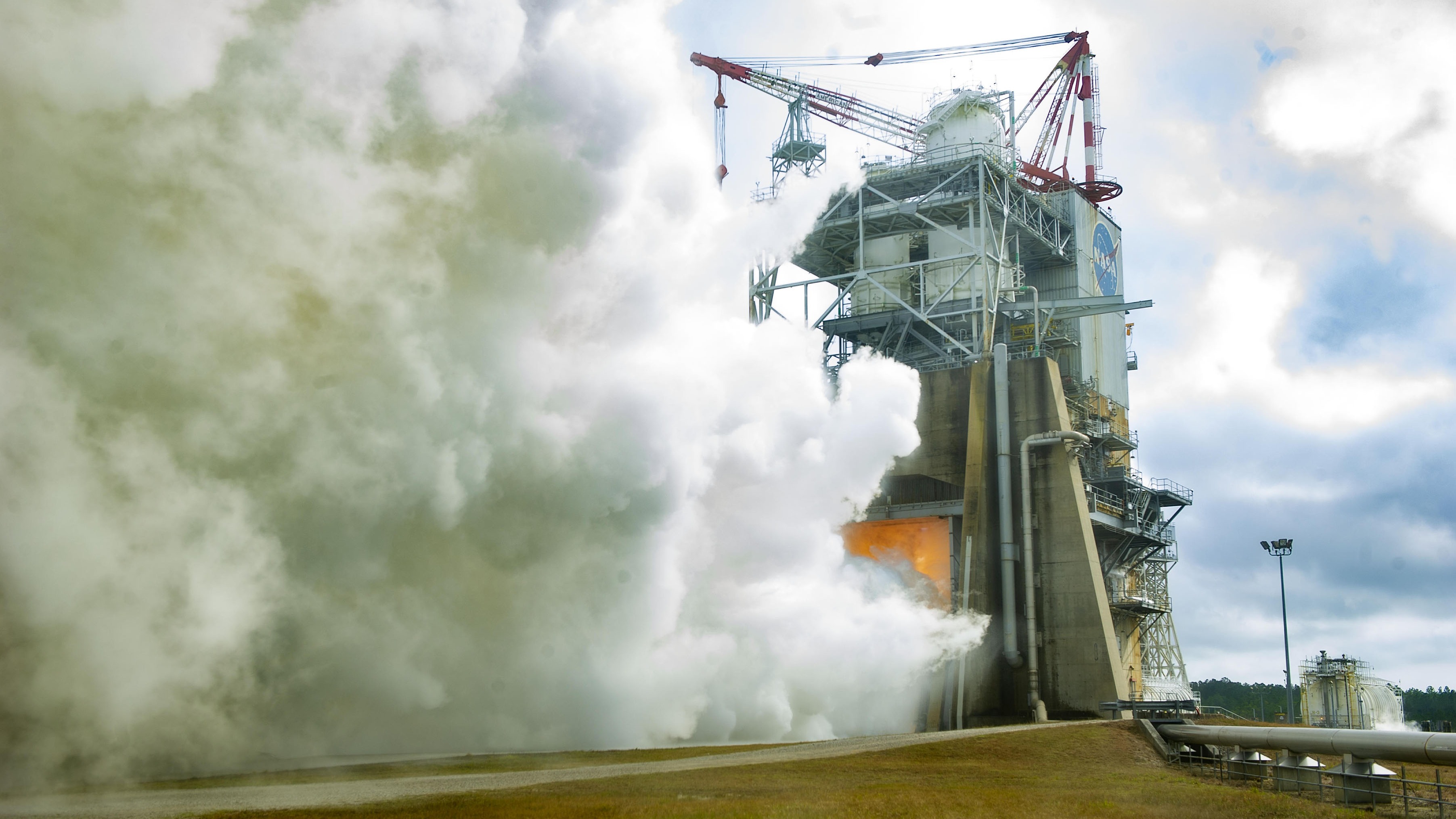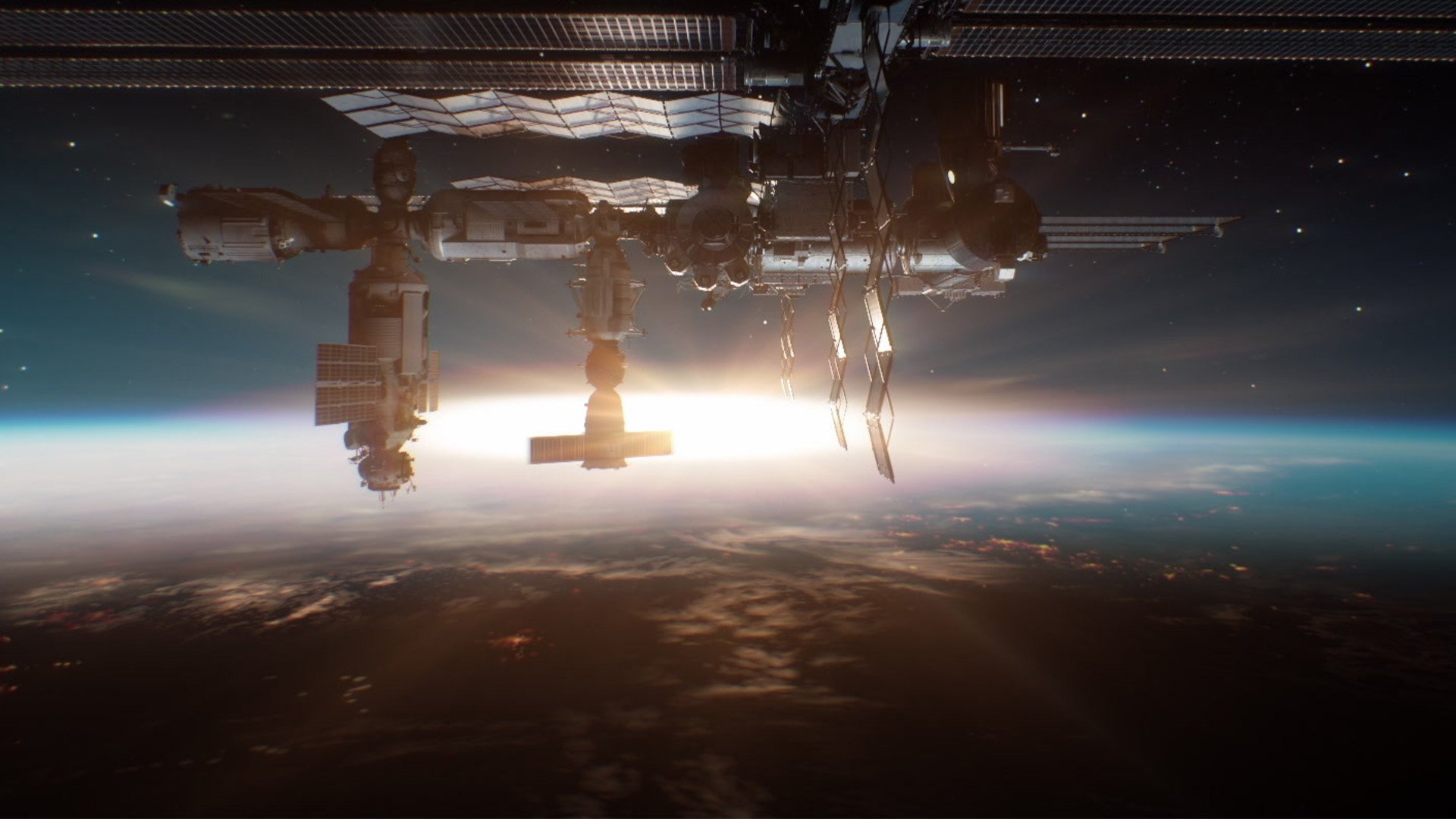NASA test fires upgraded rocket engines for future Artemis moon missions (video)
The agency wants to send huge payloads towards the moon starting with Artemis 5. Getting there requires more power from recycled RS-25 space shuttle engines.
NASA fired up an engine Wednesday (Feb. 8) to boost human moon missions.
The RS-25 engine, a veteran of the space shuttle program, has a new design for the NASA's Artemis program. Starting with Artemis 5 late in the 2020s or so, the modified engines will fly on the Space Launch System.
NASA says the newer RS-25s will deliver even more power to send the Orion spacecraft, astronauts and other big payloads to the moon or to the lunar space station Gateway. But first the engines need to be prepped for the long journey.
The test Wednesday at NASA's Stennis Space Center in Mississippi saw a recycled RS-25 engine fire in a test stand at 111 percent power on a livestream for 8.5 minutes, or 500 seconds; that's the same amount of time and power required for a launch.
Related: The 10 greatest images from NASA's Artemis 1 moon mission
All RS-25 engines flew numerous times in space during the shuttle era, which ranged from 1981 to 2011. NASA and Aerojet Rocketdyne modified 16 engines that are remaining from that program and have already completed tests for the first four Artemis missions to prove they are fit for flight.
RS-25 engine tests have been happening since Jan. 9, 2015, but NASA is readying the series now for the next generation of SLS, called Block 1B. (The series for Artemis 1 through 4 is called Block 1).
Breaking space news, the latest updates on rocket launches, skywatching events and more!
The newer set of rockets includes a more powerful Exploration Upper Stage that will allow for more massive payloads to be boosted to lunar orbit or the surface, according to agency documentation.
NASA wants to make sure each of the reused engines is ready for lunar action as the Artemis program ramps up. Artemis 1 flew uncrewed in 2022, Artemis 2's astronauts should be announced this spring for a moon-circling mission in 2024, and Artemis 3 is bound for the surface no earlier than 2025.
Elizabeth Howell is the co-author of "Why Am I Taller?" (ECW Press, 2022; with Canadian astronaut Dave Williams), a book about space medicine. Follow her on Twitter @howellspace. Follow us on Twitter @Spacedotcom or Facebook.
Join our Space Forums to keep talking space on the latest missions, night sky and more! And if you have a news tip, correction or comment, let us know at: community@space.com.

Elizabeth Howell (she/her), Ph.D., was a staff writer in the spaceflight channel between 2022 and 2024 specializing in Canadian space news. She was contributing writer for Space.com for 10 years from 2012 to 2024. Elizabeth's reporting includes multiple exclusives with the White House, leading world coverage about a lost-and-found space tomato on the International Space Station, witnessing five human spaceflight launches on two continents, flying parabolic, working inside a spacesuit, and participating in a simulated Mars mission. Her latest book, "Why Am I Taller?" (ECW Press, 2022) is co-written with astronaut Dave Williams.

